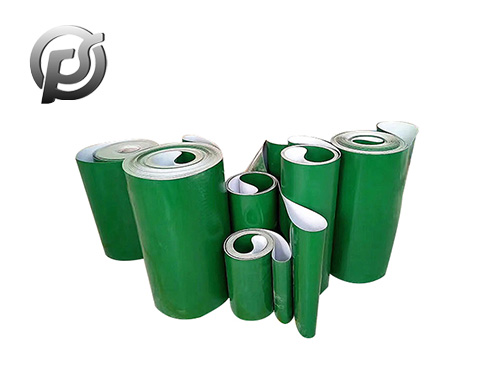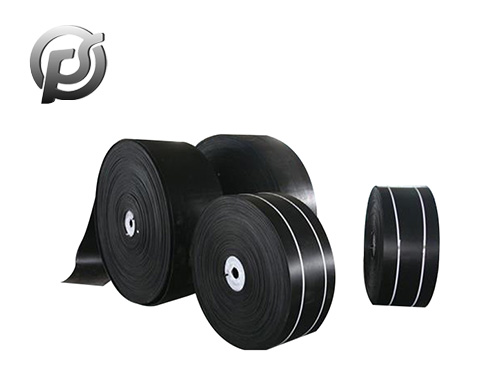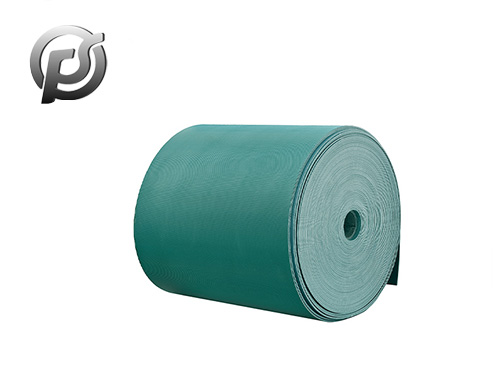PVG fabric whole core flame retardant
conveyor belt is made of chemical fiber and cotton woven whole core as the skeleton, impregnated by PVC paste and vulcanized by rubber covering. The product has good elasticity, impact resistance, small constant load elongation, special belt body, and the use of joints needs to use hot vulcanization to meet its bonding requirements.
PVG fabric whole core flame retardant conveyor belt in hot vulcanization joint treatment, need to use PVG special hot vulcanization materials. At present, the most commonly used hot vulcanizing material is sk833 hot vulcanizing glue with PVG special RIT hot vulcanizing surface glue.
PVG unvulcanized surface adhesive according to the specifications of the belt, the specific specifications are also different. There are two commonly used specifications :2mm and 4mm thick, width of 500mm, each roll 10kg. When using the belt can be selected according to the situation of the site.
PVG fabric whole core flame retardant conveyor belt joint operation process:
Vulcanizing machine part of the beam column, water plate and vulcanizing machine plate in turn put up a good working platform. Find a right Angle, cut one end of the belt into a full edge, and fix the belt with a G-shaped card;
From the right Angle two times the edge glue to the middle of the belt to make a mark, in the two marks on the break line, and then the right Angle line and the break line to find the center point, make a mark, and then the interval of 20mm to make a mark, in the break line and the corresponding number of the right Angle line with the spring line pop-up tooth line;
The upper and lower vulcanization plate is heated until the belt is soft, the tooth line is cut, and then the broken and tooth parts are polished evenly. After cleaning with cleaning agent, the rubber material is laid flat and coated with sk833;
After the baffle is fixed in the joint side glue part, the vulcanized plate and beam column are good, water is injected with a pressure test pump, and the heating wire is inserted into the vulcanized plate to start heating;
After the vulcanization is completed, the pressure of the vulcanization machine can be removed after the vulcanization temperature drops to 70℃.
 Optimizing Operations with PE Conveyor Belts: Durability, Efficiency, and Versatility
Optimizing Operations with PE Conveyor Belts: Durability, Efficiency, and Versatility
 Exploring the Efficiency and Versatility of Light Conveyor Belts
Exploring the Efficiency and Versatility of Light Conveyor Belts
 Polyester Conveyor Belts: Enhancing Efficiency and Reliability in Material Handling
Polyester Conveyor Belts: Enhancing Efficiency and Reliability in Material Handling